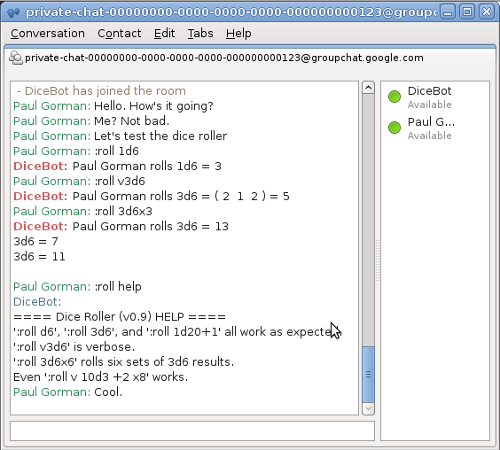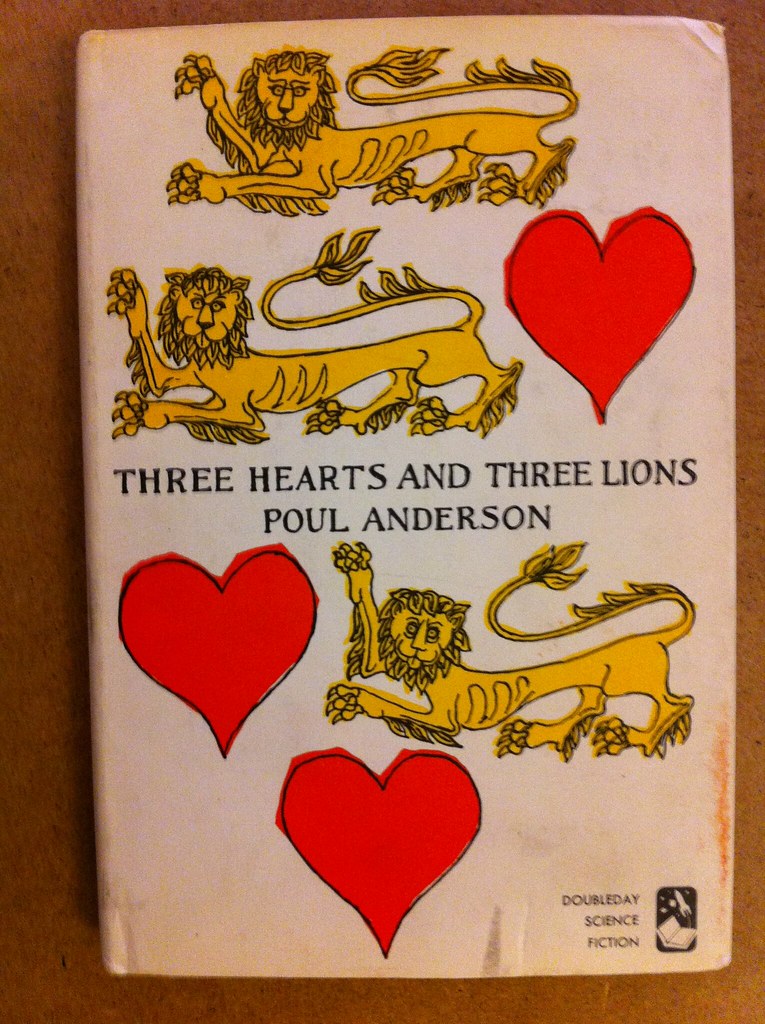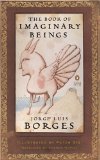- Arabian Nights
- Beowulf
- Voltaire's Candide
- Chaucer's Canterbury Tales
- Cervantes' Don Quixote
- Stoker's Dracula
- Grimm's Fairy Tales
- Spenser's Faerie Queen
- Goethe's Faust
- Gilgamesh
- Machen's The Great God Pan
- Swift's Gulliver's Travels
- Homer's Iliad
- Dante's Inferno
- Ovid's Metamorphoses
- Malory's Le Morte d'Arthur
- Homer's Odyssey
- Edgar Allan Poe's short stories
- Wagner's Der Ring des Nibelungen
- The Song of Roland
- Stevenson's Treasure Island
Friday, October 29, 2010
Classics Appendix N
Wednesday, October 27, 2010
Tuesday, October 26, 2010
What do hit points represent?
Talysman posted a meditation on hit points on Sunday.
I've always understood hit points to abstract not merely bodily intactness, but also stamina, luck, concentration, and so forth.
On page 18, Men & Magic defines hit points as "the number of points of damage the character could sustain before death. Whether sustaining accumulative hits will otherwise affect a character is left to the discretion of the referee."
The description for Cure Light Wounds says the spell "will remove hits from a wounded character[....] A die is rolled, one pip added, and the resultant total subtracted from the hits points the character has taken."
That would seem to establish a very narrow definition of hit points indicating a capacity to survive wounds, and not a measure of stamina, luck, etc.
However, a few other passages in the LBB's hint that hit points may sometimes reflect more than wounds. The description for wights says they "drain away life energy levels when they score a hit in melee, one level per hit. Thus, a hit removes both the hit die and the corresponding energy to fight, i.e. a 9th level fighter would drop to 8th level."
The wight description is interesting for two reasons. First, it could be read in conjunction with the Cure Light Wounds description ("will remove hits"
) to mean that Cure will "remove hits" inflicted by the wights, and therefore restore the drained level* caused by those hits. Second, the wight description links "hits" with "energy to fight".
Hit dice dictate the number of creatures affected by Sleep. Sleep does not wound the targets, so that too indicates hit points/dice measure something in addition to the capacity to survive wounds.
Perhaps the most direct reading is that hit points correspond directly to the capacity to sustain wounds, but it's possible to understand some passages to mean that hit points/dice sometimes represent other concepts. I tend to favor the latter reading. Practically speaking, an experienced combatant may to some extent be able to mitigate wounds (maneuver to take a bruise to the shoulder instead of a slash to the ribs), but they'll certainly be better conditioned both mentally and physically to the rigors of battle in terms of stress, fatigue, and concentration.
* Although page 35 of Underworld & Wilderness Adventures says "energy levels can only be regained by fresh experience, but common wounds can be healed with the passage of time"
.
Friday, October 22, 2010
This game is fun
"...it was more important to start playing and to play regularly than it was to get everything completely right. [...] the players all said that they had a wonderful time and they would very much like to continue. It could be that the inadequacies of the session were entirely in my head or, at least, invisible to the players."Yes, indeed. I'm sure Evan ran a good session. One of the things I've learned over the past few months, though, is that this game is fun. Even if the DM isn't at his best during a particular session, or isn't as prepared as he'd like to be (and who ever is!), the game is still fun. Friends, dice, and dungeon crawling is a hard to ruin recipe. That realization has helped me relax and enjoy myself as a referee.
Thursday, October 21, 2010
Alignment = the Flow of Capital
Adventuring characters gain experience through the wealth they extract from the underworld. As detailed in The First Fantasy Campaign by Dave Arneson, adventurers in the initial version of what was to become D&D were required to spend their plundered gold pursuing certain motivations in order to gain experience from it. Gold allows experienced adventurers to bring order to the wilderness on the surface through the construction of strongholds. The forces of Law desire the plundering of gold from the clutches of Chaos in the underworld that they might spread the will of man across the land.My imagination went to a slightly different place with this idea than Sham took it. He went in a metagame direction (XP), while my thinking was more economic. Both approaches are slightly different aspects of the same thing, and lead to similar outcomes.
The more gold in man's economy, the more the domain of Law expands, thereby encroaching on the domain of monsters. It's habitat destruction.
Most monsters of low and medium intelligence have no use for gold. Their "societies" are anarchies where the strong dominate the weak. They have little use for abstract currency, since their economy is based on barter—barter of goods, or the barter of favors and promises.
However, some intelligent monsters recognize the dangers posed to their habitat by man's expansionism. These monsters, particularly dragons, hope to stymy civilization by removing currency from the human economy (i.e.—hoarding treasure). They do so directly and by employing lesser agents, such as orcs, goblins, and kobolds. Goblins have no interest in gold, but they desperately want the favor and protection of a dragon or his mid-level ogre operative.
Low level adventurers are just as much cogs in the System of Capital as goblins. This is even more evident if you use the carousing rules in your game—characters acts as hoses, syphoning gold from the dungeon to the economy. Even neutral, primarily self-interested adventurers are therefore agents of Law.
Law versus Chaos is all about the flow of capital. Dragons are economic terrorists, who want the flow running away from Men.
Wednesday, October 20, 2010
In defense of coin-weight encumbrance
Tuesday, October 19, 2010
The Clamorous Opal
Monday, October 18, 2010
The magic sword Dachmikek
Dachmikek
+1, +2 versus goblins, hobgoblins, and bugbears
Lawful; INT 7; empathic; Egoism 1 (leads user past better weapons)One primary power: detect gems
When wielded, this sword will cause a tingling sensation in the user's arm when it comes within 60' of a previously undetected gem. Within 10' of the gem, it will cause euphoria to the extent that the user must save versus Stone or become overexcited (-3 AC and -3 to hit). If the saving throw is failed, the character may attempt to save again on each subsequent turn to end the effect. On the blade of the sword is its name, and an unlabeled map, which appears to show a mountain stronghold. These markings are not inscribed or etched into the blade; they are drawn by veins of carbon which run through the entire thickness of the steel.
Friday, October 15, 2010
Food always tastes better when you're hungry
Wednesday, October 13, 2010
Life span differences
Then there are Elves. Immortal they provide a living memory back into the depths of time for the cultures they come into contact with. It as in the 21st century we have people who knew and spoke with Julius Caesar, Charlemagne, and other historical figures of the past.This would be an issue for any two races of significantly differing lifespans. How they each deal with the issue would indeed tell much about their cultures. An elven culture might, for example, have some sort of "prime directive" to prevent them from derailing the cultures of shorter-lived races. Imagine a group of humans who, in order to extract valuable information, hold captive a memeber of a long-lived race—perhaps for generations.
Friday, October 8, 2010
Search the OSR
Thursday, October 7, 2010
Island hopping campaign
Wednesday, October 6, 2010
Dice roller bot

Tuesday, October 5, 2010
Fairy tale inspirations
Year after year, we print and re-print fairy tales. What is it that makes them valuable? [...] surely the tales do not teach morality. Remember the egregious brutality of that spoiled princess in The Frog King who, after hurling the little animal who helped her against the wall, gets rewarded. [...] Nor do the tales psychologize or philosophize. What they do, instead, is what all great children’s literature does: they literalize metaphor. They lower their glittering buckets deep into the psyche’s well. [...] Not quite like ancient myths, which use nymphs and satyrs to explain recurring natural phenomena; nor like fables, whose timeless moral lessons are parlayed through the escapades of animal characters; nor like legends, which exude the pungent aromas of one particular locale and its history, fairy tales are [...] stories made to summon wonder, horror, enchantment—and not necessarily anything more. Uncanny in the purest sense of the word, which is to say, both bizarre and familiar at once[....] the Grimms’ tales match, with an almost miraculous precision, children’s own ways of thinking. They transform contiguity into causality, and they maximize contrast.Mixing these characteristics into a D&D would give it a fairy tale flavor. Here's a quick example. Take the idium/cliche "ton of bricks". Imagine the ruler of a small kingdom, who was forced (for whatever reason—war, famine, corruption) to make very difficult decisions. One of his policies hurt a witch. The witch put a curse on him: every time one of his decisions harmed one of his subjects, a lead ingot would appear in his vicinity. Over the course of a few months, his castle filled with lead ingots. Eventually, the structure collapsed, killing him and his family. That's your dungeon— a ruined castle full of lead ingots. This could present some interesting challenges to adventurers, and a backstory for the players to uncover as they explore.
Monday, October 4, 2010
The Book of Imaginary Beings
- the shaft of a griffon's feather makes a marvelous bow
- angry villagers who slay a monster might have it taxidermied and prominently displayed to visitors
- the dots on tortoise shells are treatises about the cosmos

